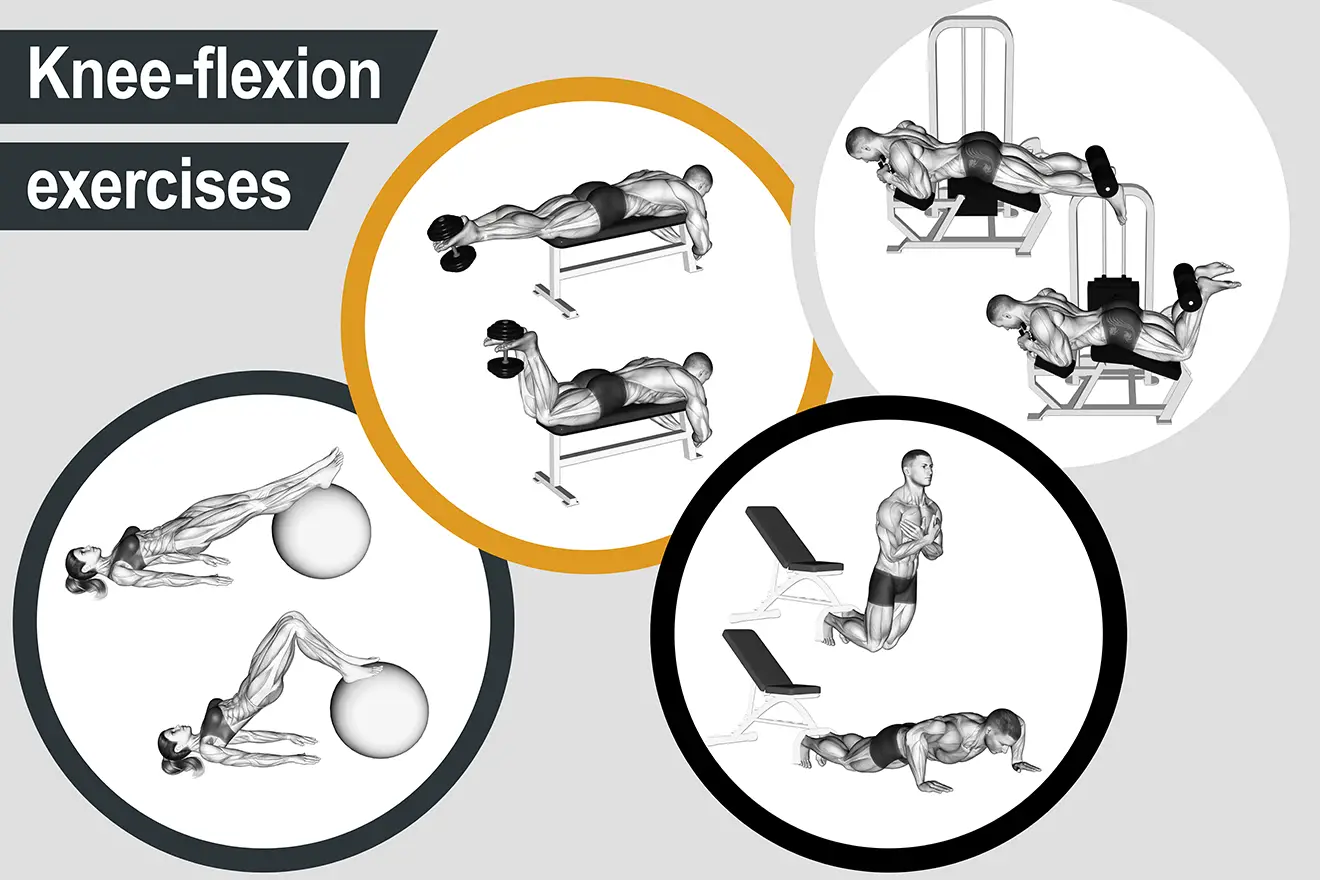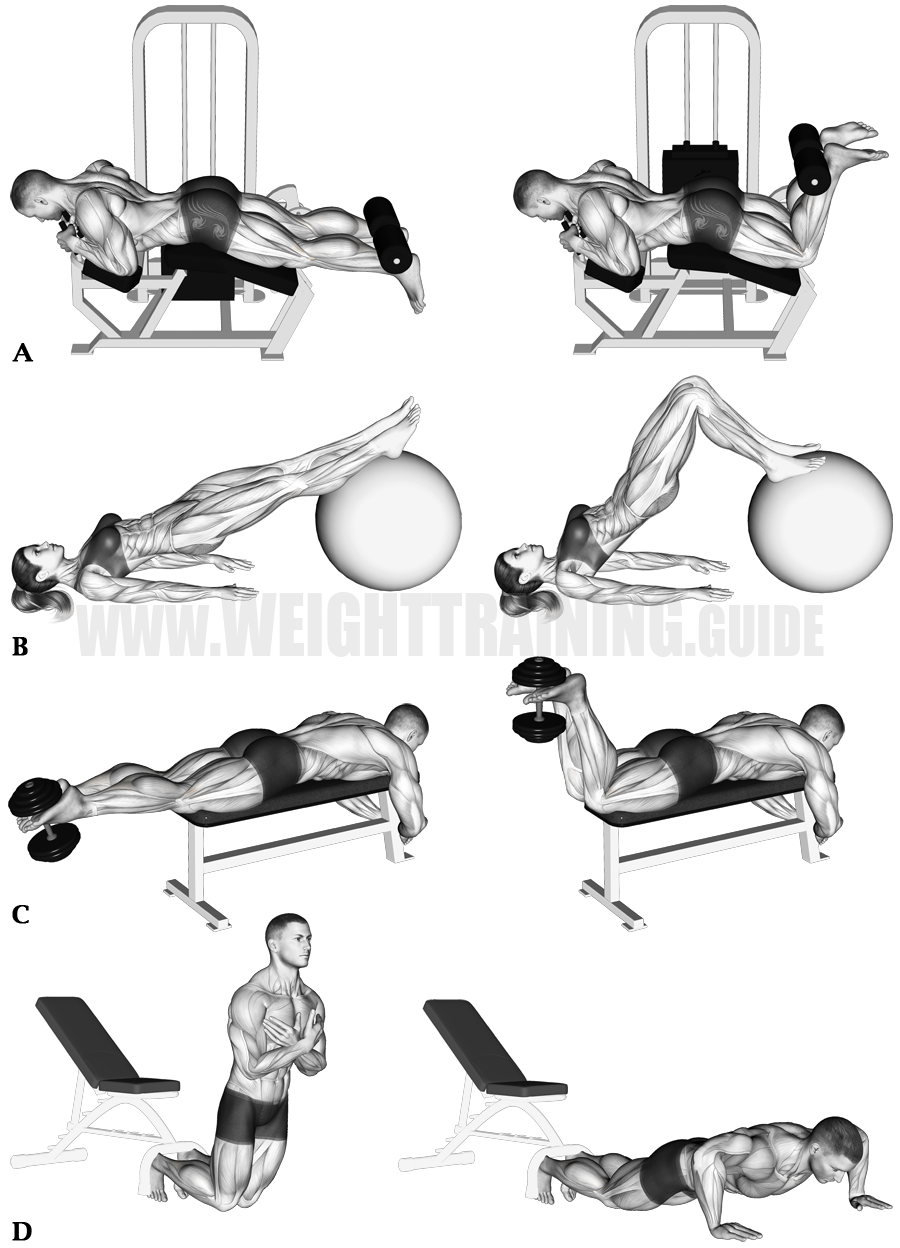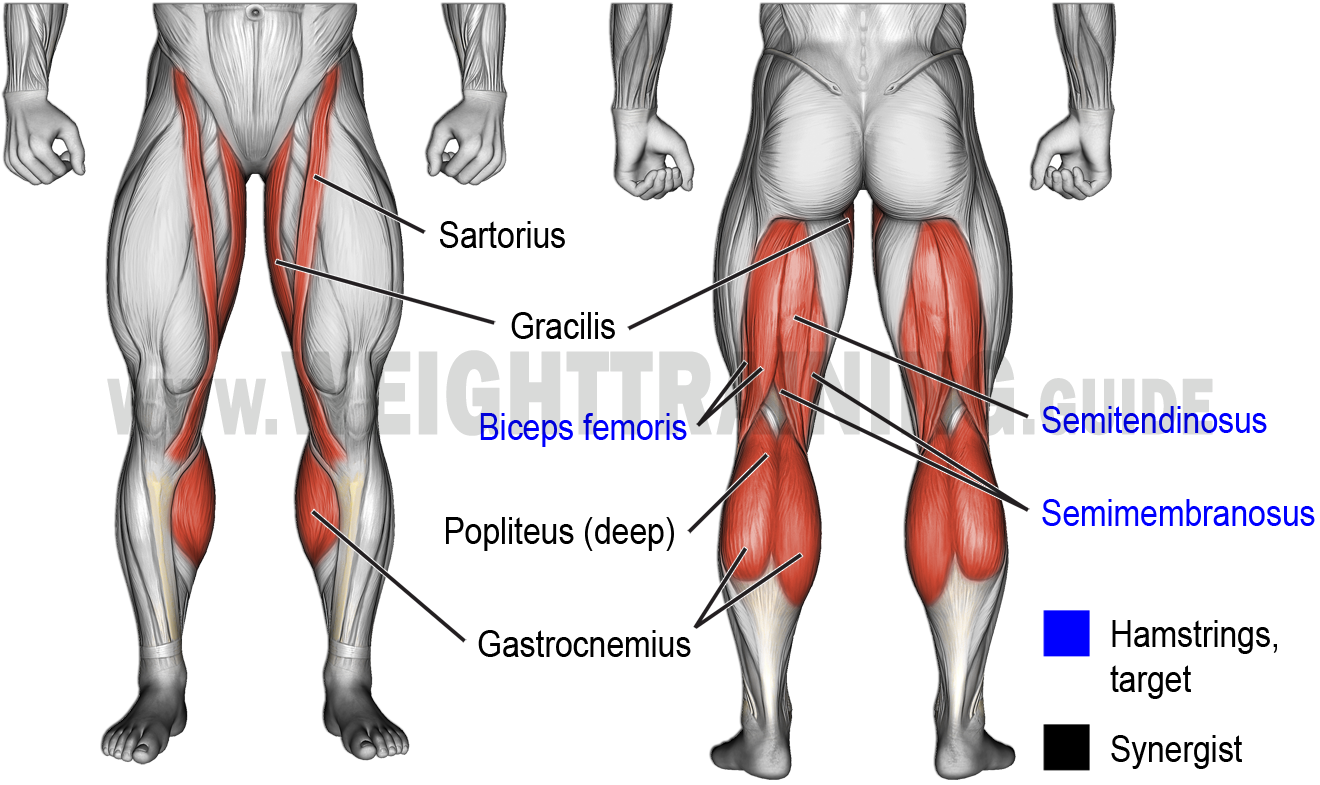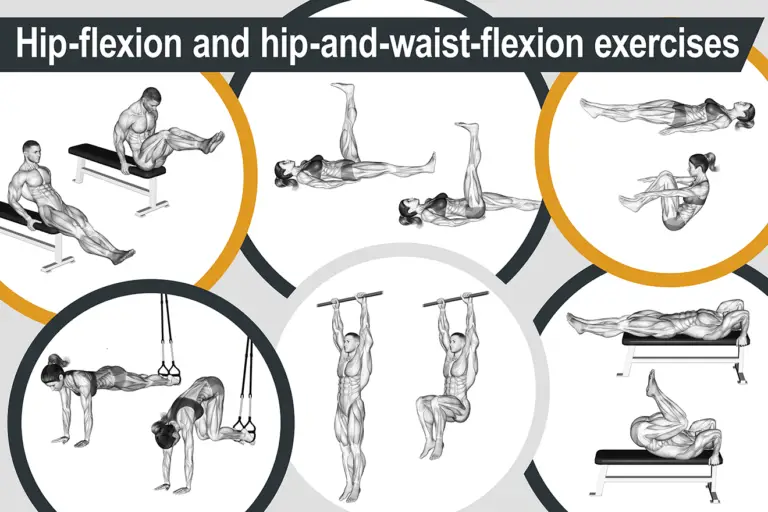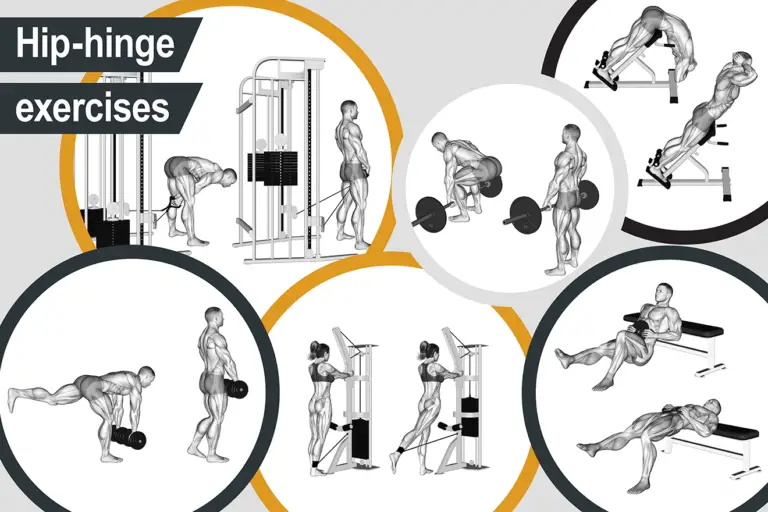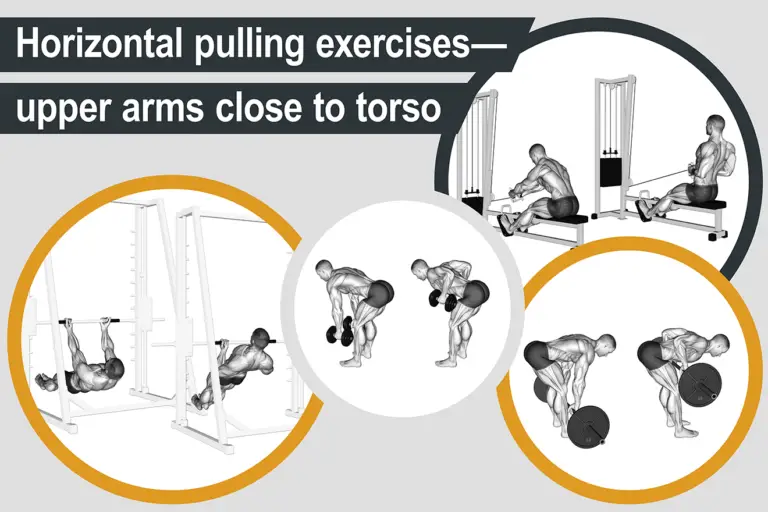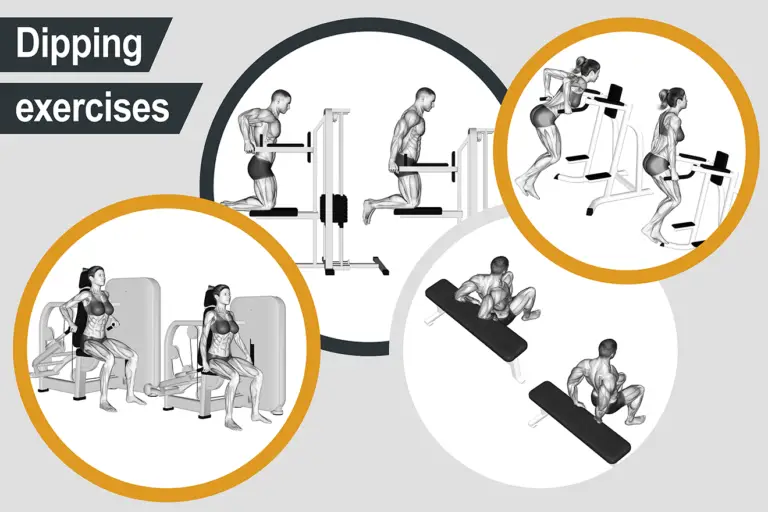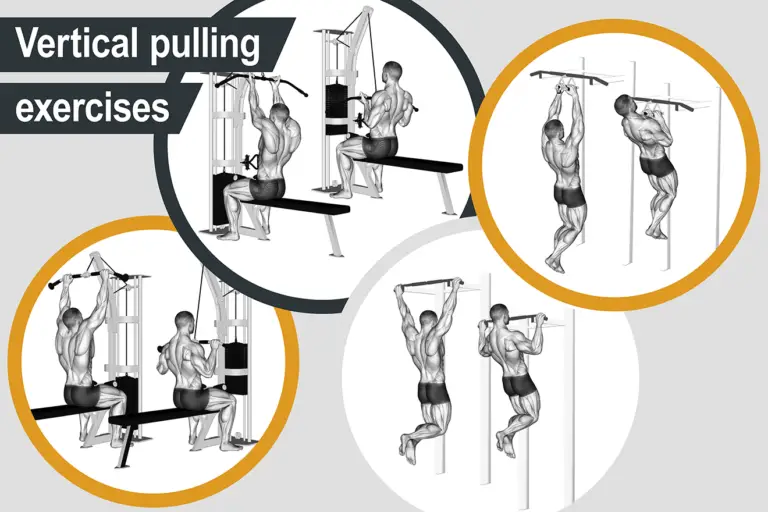Knee-flexion exercises
Movement patterns and classification
Knee-flexion exercises (for example, Figure 1) involve flexing your knee to either lift a weight or slowly lower your body to the floor after locking your heels under something stable. As only a single joint is utilized, knee-flexion exercises are classified as isolation.
Figure 1. Examples of knee-flexion exercises. A. lying leg curl; B. stability ball leg curl; C. dumbbell leg curl; D. inverse leg curl.
Muscle activation
Knee-flexion exercises target your hamstrings and synergistically activate your gastrocnemius, gracilis, sartorius, and popliteus, which is situated under your gastrocnemius (Figure 2). However, your gastrocnemius will be activated properly only if you keep your ankles dorsally flexed (that is, if you point your toes up toward your shins). The reason is that your gastrocnemius crosses your knee joint, and as your knee flexes, your gastrocnemius becomes loose. By keeping your ankles dorsally flexed, you will keep your gastrocnemius as stretched as possible, thus enabling it to apply more tension.
Figure 2. Main muscles activated by knee-flexion exercises.
Your hamstrings consist of three muscles: biceps femoris, semitendinosus, and semimembranosus. While performing the lying leg curl, you can emphasize activation of different hamstring muscles by adjusting the orientation of your feet:
- Turn your feet inward to emphasize your inner hamstrings
- Turn your feet outward to emphasize your outer hamstring

